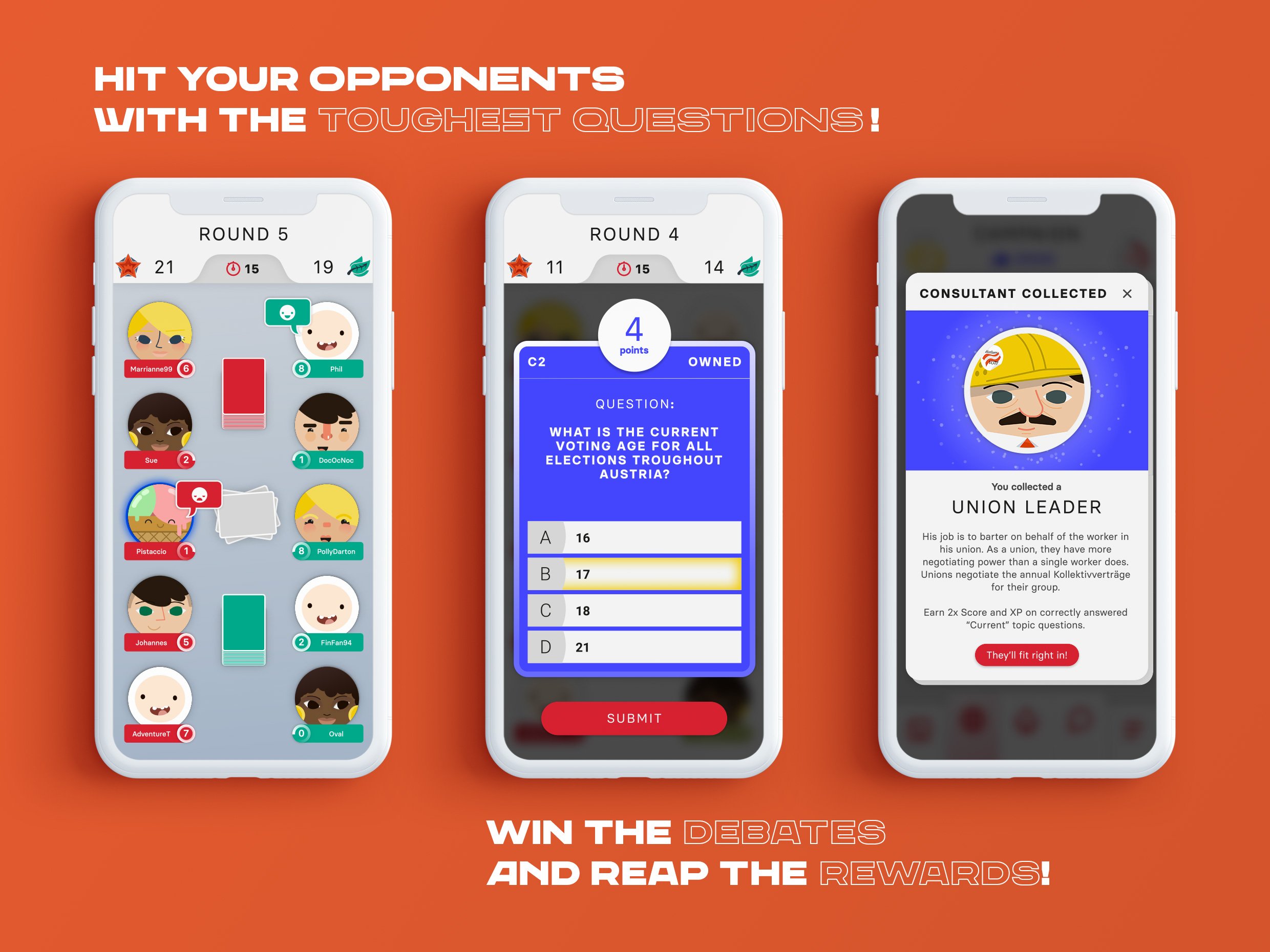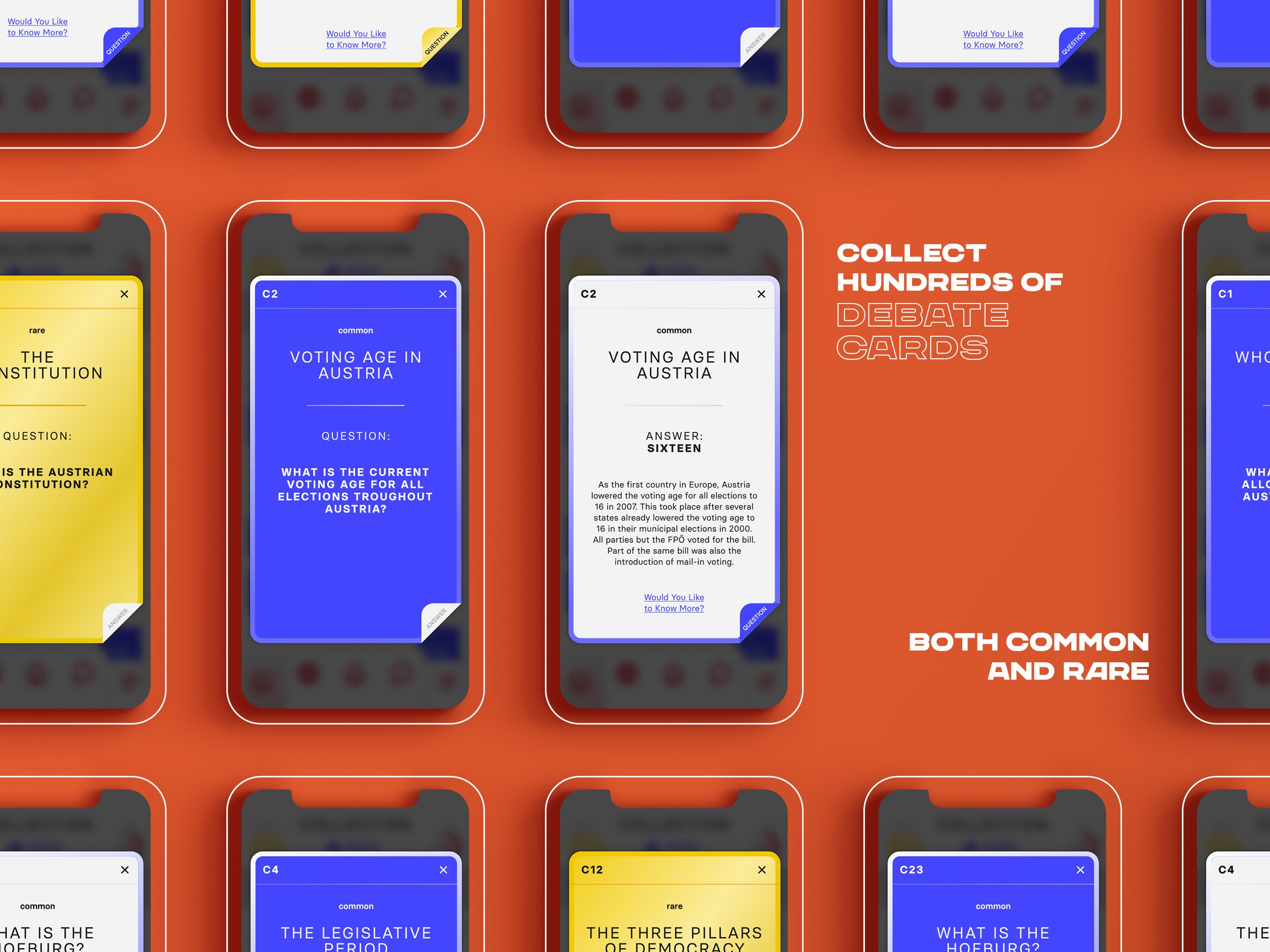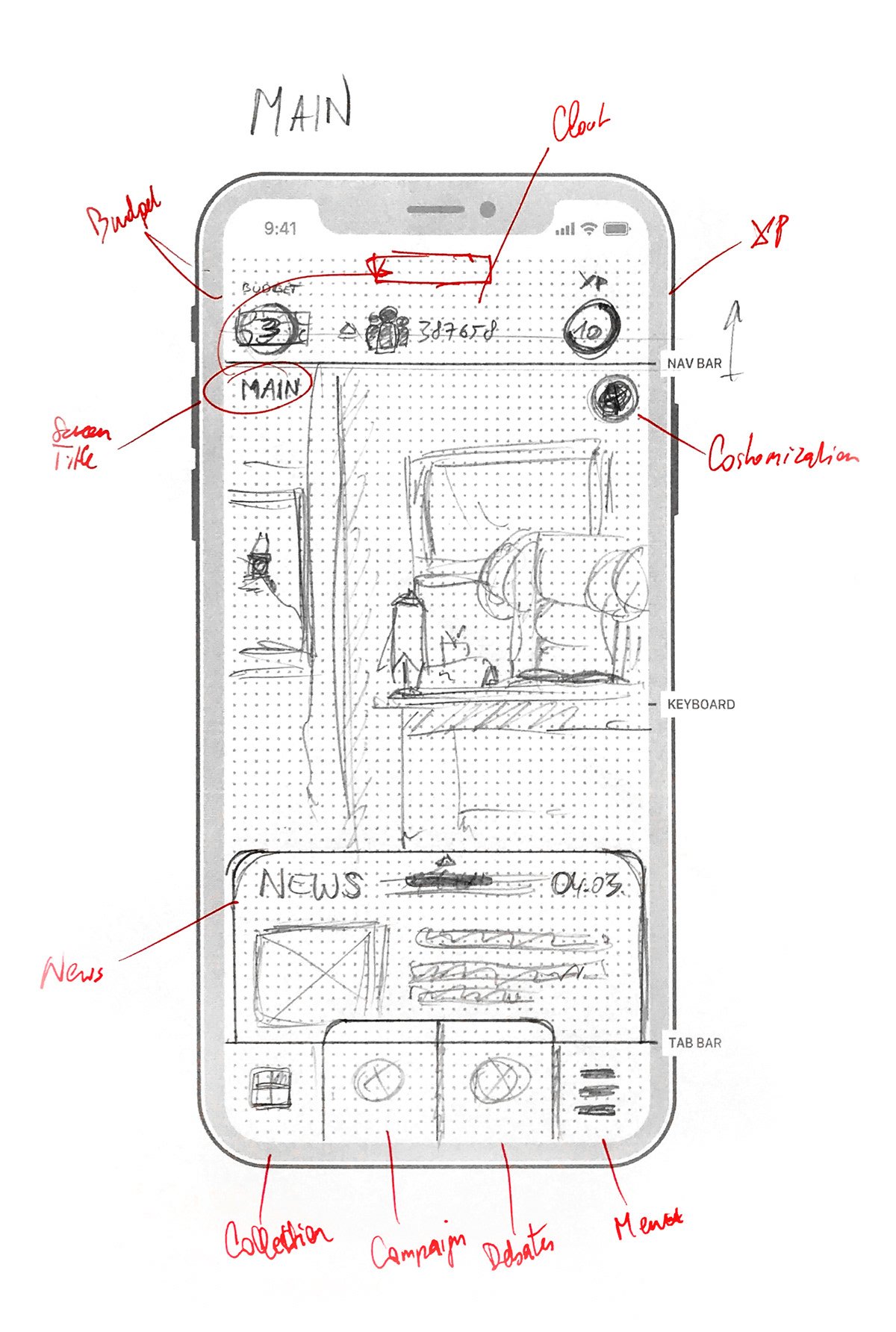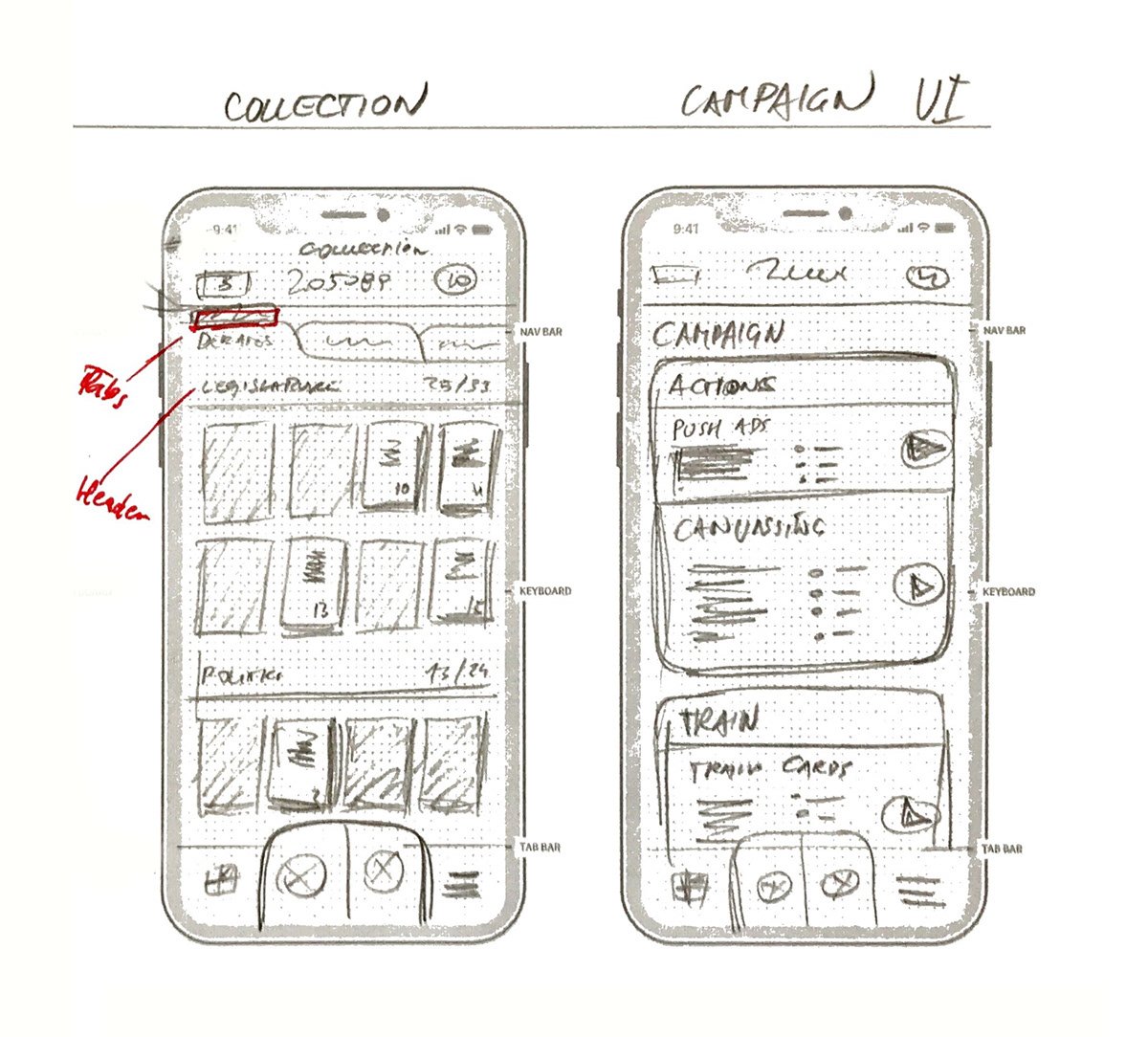
Wahltag
Master's Thesis / Video Game Concept
Creating a concept for an educational mobile game, with the goal of teaching teenagers about Austrian politics, and motivate and animate them to vote! This project included extensive research into the psychology of voting and how to use games and gamification to engage with young people. The result, a scientific view behind the motivation of voting, a working game design document, and a click prototype became part of this master's thesis. #getoutthevote

Gamification of elections
»Democracy has to be born anew every generation, and education is its midwife.« —John Dewey
This project presents my Master's thesis created as part of the Master's degree program of Interaction Design at the University of Applied Sciences Joanneum in Graz, Austria.
It encompasses research, a game concept, a design proposal as well as an interactive prototype. This Master's thesis was created over the course of several months under the supervision of FH-Prof. DI Dr. Maja Pivec.
On the Origin of Votes
Voter turnout has been declining over the last decades in most parts of the world. With growing frustration over politics and political parties, people are increasingly turned off from participating in the electoral process. While Austria has tried to counter this decline in numbers by lowering the voting age to 16, this is only part of the solution. First-time voters at that age must be educated about the political processes, as well as properly motivated, to achieve the desired effect.
At the same time, games and mobile apps are increasingly using gamification methods to better engage with their users. From inspiring users to save energy in their homes, to encouraging them to work out on a daily basis, games and apps are actively shaping people’s lives.
The goal of the thesis is therefore to create a concept and design for a mobile game that not only educates the target audience—young, first-time voters—but also uses gamification techniques to animate them in participating not only in the election, but in the political discourse in general.


The Educated Voter
The core mechanic of the game—called "Wahltag"—is to compete against other players in a competitive quiz match. The quiz questions test your knowledge about politics and democratic processes. The twist is, the players choose which questions to pose to the group, essentially quizzing each other. While each team member has to answer on their own, the points they gather are added together—only one team can leave the debate as a winner!
Successful debates reward the players with new quiz questions for the next debates, resources, perks, and customizables, to help their party fighting their way to the top!

The Right Stuff
The game makes heavy use of different gamification techniques, including a progression and quest system, collectibles, and different ways of customizing your character and player profile.
The main pillar, however, is the collection mechanic. Each player has a collection of quiz questions—Debate Cards—they can use in the aforementioned quiz matches: they decide what questions are asked! So, collecting and learning as many cards as possible is imperative to win the debates (just like in real life, preparation is everything). The players assemble their own library of political knowledge.

Impacting on Real Life
The design process followed all the classic steps. First there was the research. In this case substantial research was warranted, not only to satisfy the scientific aspirations of a Master's thesis, but also to establish a scientific foundation for all the game mechanics and designs to be built upon. This was especially important, since all the mechanics had to serve this specific purpose as well: to not only educate the players, but to motivate them and to animate them to take action in real life.
After setting clear goals, the challenge was to create game mechanics that accomplish those objectives or supplement the design. User testing and prototyping was challenging, considering the circumstances of the pandemic*.
The rest was par for the course: sketches, wireframes and diagrams help to make sense of everything. Site maps and low-fi wireframes are used to organize the screens and interactions. First designs were made to set the style and mood an interactive prototype was set up to better showcase the gameplay and concept.
*Hey reader from the future! Do you remember? That weird thing in 2020 where we had to sit at home all the time and couldn't meet other people in person or give hugs? Crazy times, I know. How are those hover boards, btw? The things we have here have wheels and catch fire if you use them... well, anyway, I have to get back to writing that copy text for the design case—see you in the future!
Sketches and Wireframes set the overall structure of the game and its functions.

Later, paper prototypes and volunteers were used to refine the core gameplay loop.
Walkthrough of the interactive prototype
“Democracy is not a spectator sport.”


